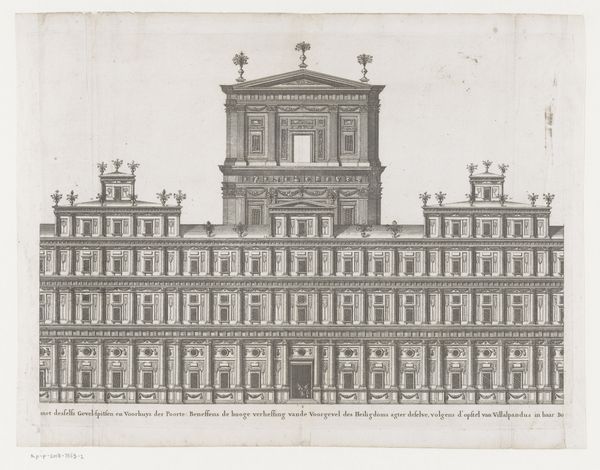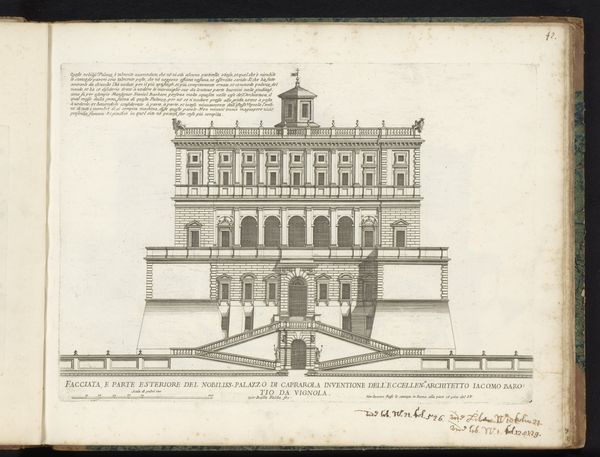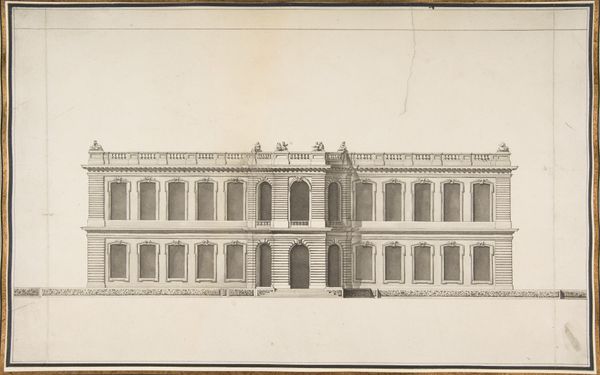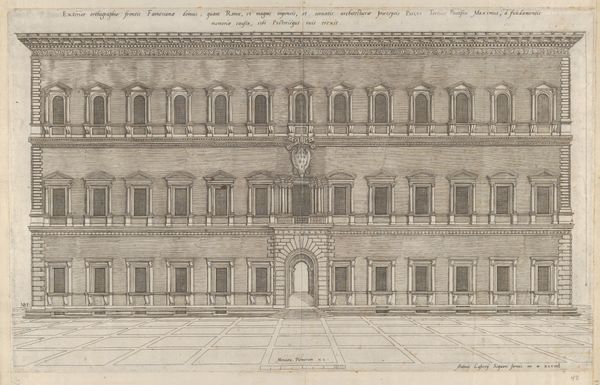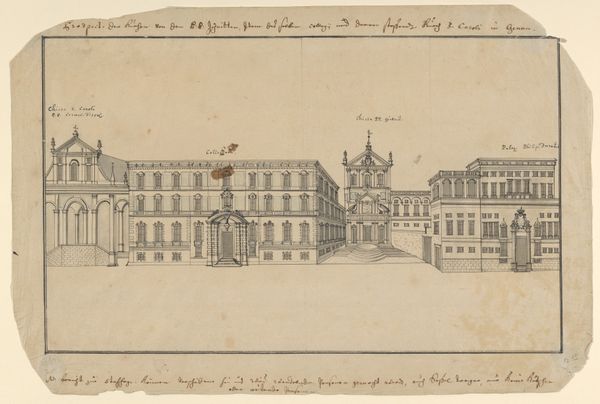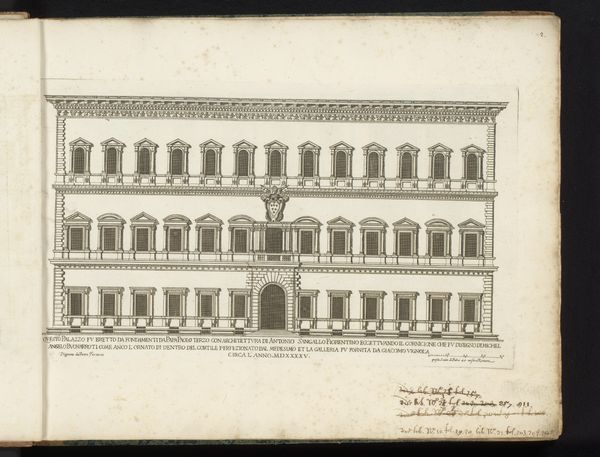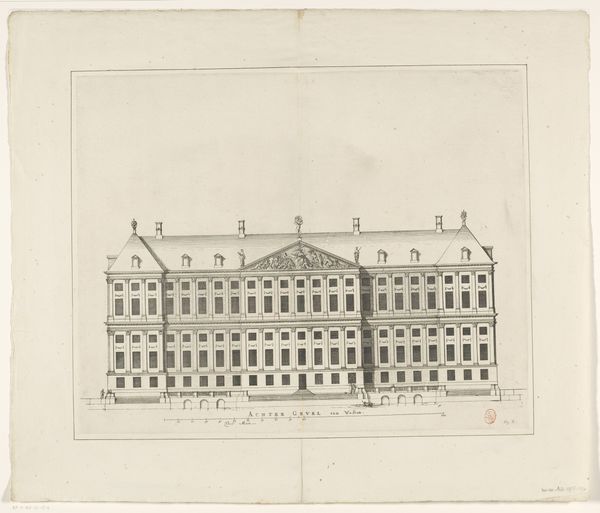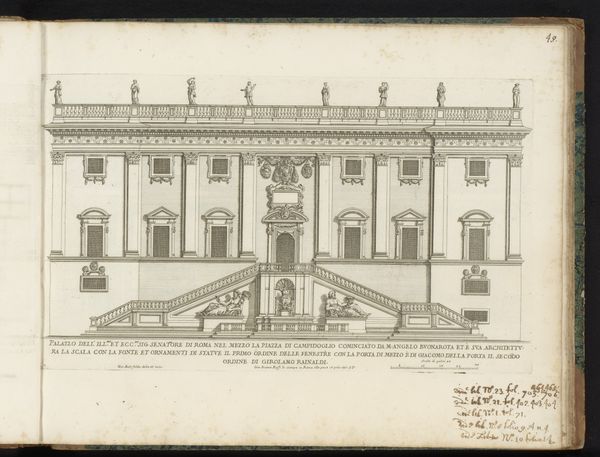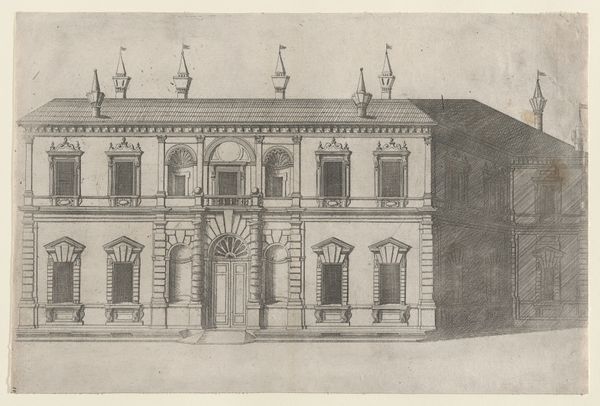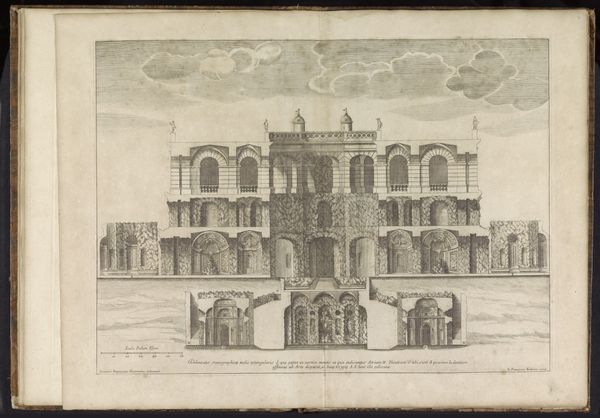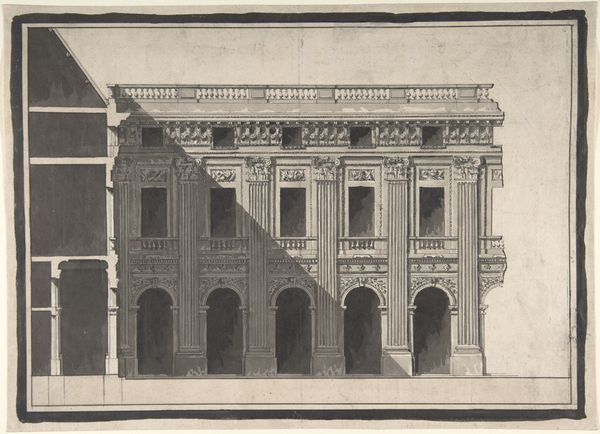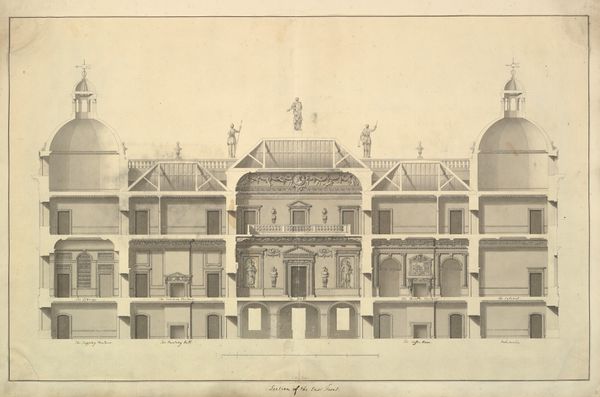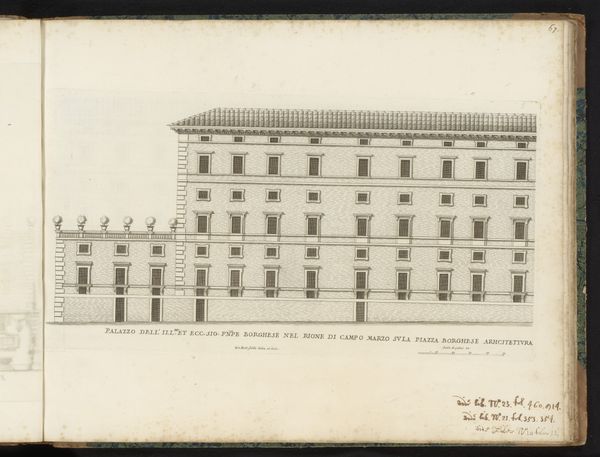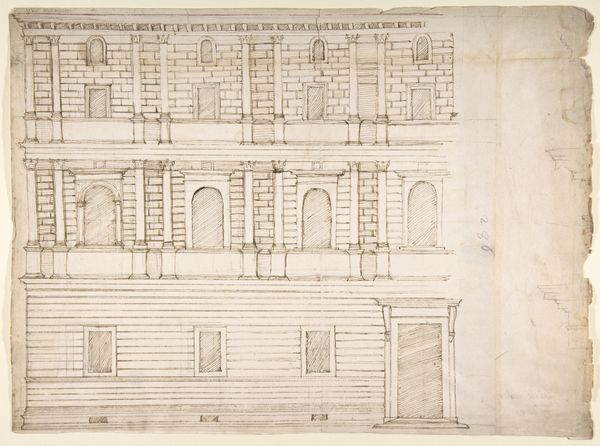
Aanzicht op de tempel van Salomo volgens Villalpando (blad links) c. 1725 - 1727
0:00
0:00
etching, engraving, architecture
#
baroque
#
etching
#
etching
#
perspective
#
geometric
#
line
#
cityscape
#
engraving
#
architecture
Dimensions: height 292 mm, width 498 mm
Copyright: Rijks Museum: Open Domain
Curator: Let’s turn our attention to this fascinating print titled "Aanzicht op de tempel van Salomo volgens Villalpando (blad links)", created around 1725-1727 by Juan Bautista Villalpando. It depicts, as the title suggests, Villalpando's vision of the Temple of Solomon. Editor: It's so precise! The lines are incredibly sharp, giving a rigid, almost mathematical feel to the structures. I am immediately drawn to the detail of the facade on the right; all those windows and columns give an overwhelming feeling. It also looks quite modern for such an old illustration. Curator: That precision reflects the Baroque period's fascination with perspective and mathematical renderings of space. Villalpando was, in a sense, trying to reconstruct a historical and spiritually significant building according to specific architectural and theological principles that resonated with his era's power structures. It becomes this grand statement on ideal architecture. Editor: The technique, being an etching, seems crucial. Etching allows for such fine detail and controlled lines. It is more of a labor-intensive method; there is a sense of constructed effort there, very different from a more free-form sketch. Considering the theological theme, did the labor-intensive approach become symbolic in and of itself? Curator: Precisely. The detailed execution amplified the perceived accuracy and, by extension, the authority of the depiction. Its distribution in print form also helped propagate Villalpando's vision of the temple within specific intellectual circles. Editor: You are making me see this piece of printed paper less as just an architectural representation and more as an attempt to construct an understanding around religion. This helps elevate the architectural function towards the ideological use. Curator: Indeed. The image also gains prominence in discussions surrounding religious authority during this historical period. Editor: Thinking about this work now, I see more layers than initially met the eye. Curator: Absolutely, and that's the beauty of examining art through historical and material lenses.
Comments
No comments
Be the first to comment and join the conversation on the ultimate creative platform.
